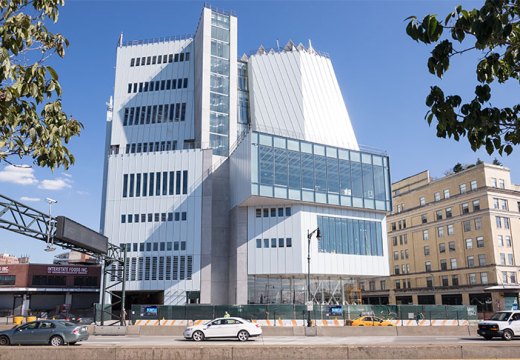Our daily round-up of news from the art world
Carlos Cruz-Diez (1923–2019) | Carlos Cruz-Diez, the Venezuelan pioneer of kinetic and Op art, died on Saturday at the age of 95. After studying at the Escuela de Artes Plásticas y Aplicadas in Caracas between 1940 and 1945, Cruz-Diez first worked as an illustrator, before moving to Paris in 1960, where he lived for the rest of his life. Experimenting with line and colour, Cruz-Diez created a striking body of work that played with the viewer’s perceptions. Among his many accolades, he won the international painting prize at the 9th Bienal de São Paulo, represented Venezuela at the Venice Biennale in 1970 and received public commissions in Caracas, Los Angeles and Liverpool.
Neil deGrasse Tyson keeps post at American Museum of Natural History after closure of sexual-misconduct investigation | Neil deGrasse Tyson, the astrophysicist who directs the Hayden Planetarium at the American Museum of Natural History in New York, will keep his job after the institution’s closure of its investigation into sexual misconduct allegations made against him. In a statement, a museum spokeswoman said that ‘based on the results of the investigation, Dr. Tyson remains an employee and director of the Hayden Planetarium. Because this is a confidential personnel matter, there will be no further statements by the museum.’
Archaeologists discover temple belonging to sunken ancient city | A temple belonging to the ancient city of Thônis-Heracleion has been discovered by archaeologists during excavations on the site, which was first located in 2001. The European Institute for Underwater Archaeology (IEASM), headed by Franck Goddio, found that a crucial section of the temple, which was devoted to the god Amun-Gereb, had become concealed – and was protected by – a canal during an earthquake that destroyed the city in the 4th century BC. Excavations have yielded a trove of statuettes, coins and ritual objects. Close to the canal, IEASM archaeologists have also found the remains of a small tholos containing ritual objects in silver and bronze.
Unlimited access from just $16 every 3 months
Subscribe to get unlimited and exclusive access to the top art stories, interviews and exhibition reviews.














![Masterpiece [Re]discovery 2022. Photo: Ben Fisher Photography, courtesy of Masterpiece London](http://www.apollo-magazine.com/wp-content/uploads/2022/07/MPL2022_4263.jpg)






